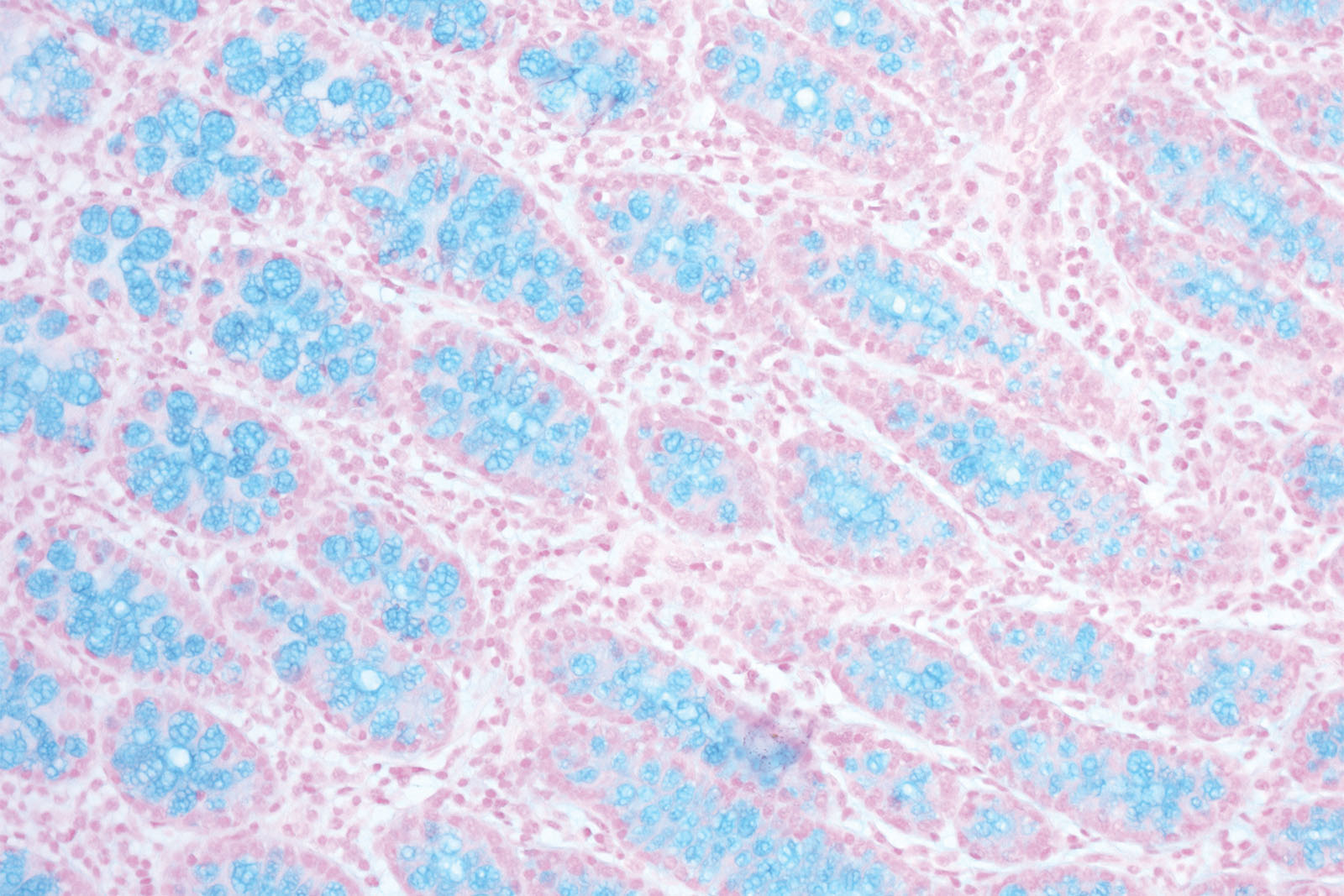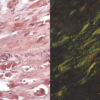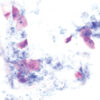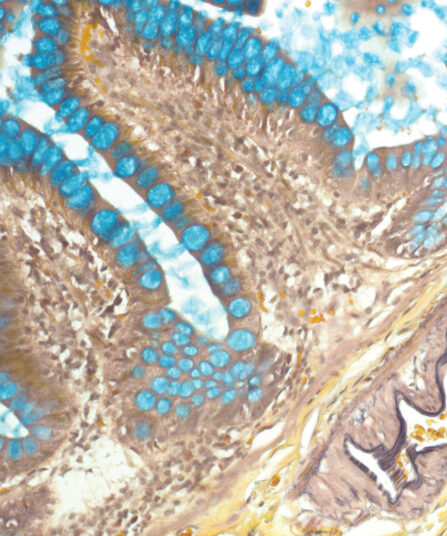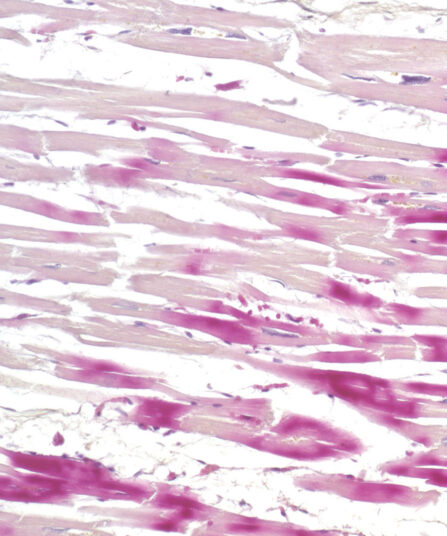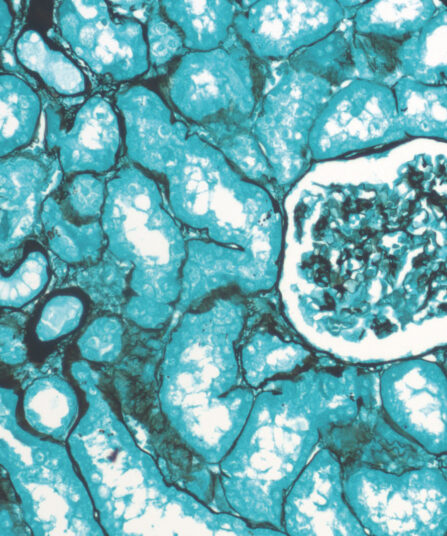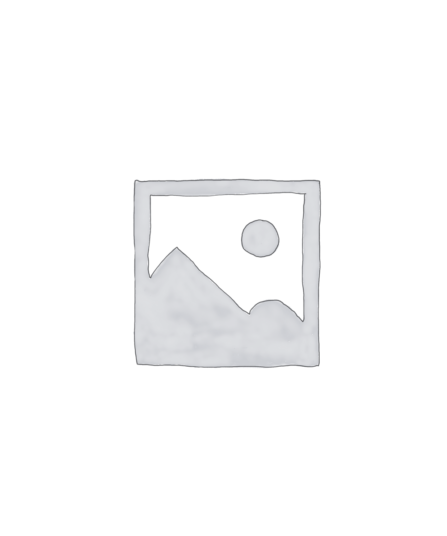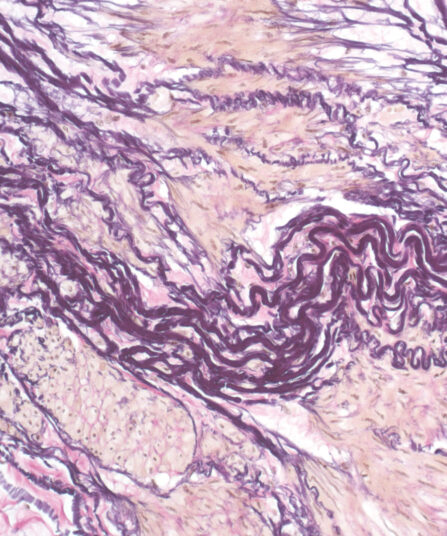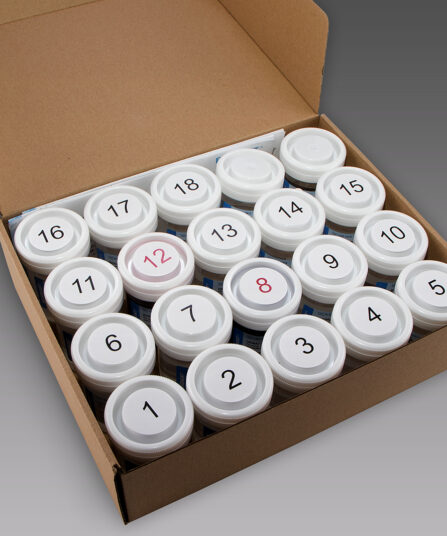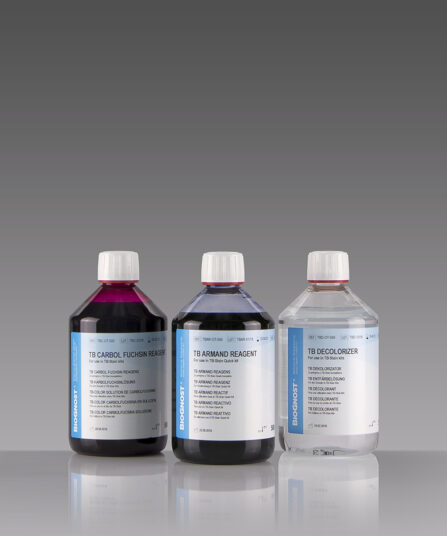Alcian Blue dye is used to prove glycosaminoglycan in mucins, for staining amyloids, cysteines and for polychromatic staining of mastocytes according to Alcian-Blue Safranin. It is also used to determine bacterial species and detecting bacterial capsules. Alcian Blue pH 1.0 kit enables adequate staining and visualisation of heavily sulfated mucopolysaccharides without staining carboxylated acid mucins or neutral mucins. Cellular nuclei are stained red using a counterstain.
Alcian Blue pH 1.0 kit
Three-reagent kit for staining heavily sulfated mucopolysaccharides. Slides are counterstained with Nuclear Fast Red (Kernechtrot) reagent to fully detect the presence of Alcian Blue positive staining.
Description
Additional information
| Size | |
|---|---|
| Brand | |
| Stain pack | |
| Stain Category | Carbohydrates |
Related products
Stain Kits
Movat kit
Ten-reagent kit for staining collagen, elastic and muscle fibres, mucin and fibrin in tissue section. Movat kit is particularly useful when examining heart and vascular diseases.
Stain Kits
H.B.F.P. kit
Three-reagent Hematoxylin-Basic Fuchsin-Picric acid staining kit for detection of cardiac muscle changes after ischemia or myocardial infarction. H.B.F.P. kit is a non-enzymatic histochemical technique for detection of early myocardial ischemia with vivid contrast.
Stain Kits
Grocott kit, stabilised
Seven-reagent kit for visualization of fungi and histological argentaffin structures in general (such as basal membranes). Green counterstain provides clear and visually rich contrast to target structures stained black.
Stains Reagents And Dyes
Rapid Romanowsky (Diff Quik) Stain Kit 3×0.5L
Stain Kits
Elastica-Van Gieson kit
Four-reagent kit for staining elastic fibres and differentiation between elastic tissue, collagen and other types of connective tissue. The rapid method enables a satisfactory result with shorter section staining time.
Stain Kits
TB-Stain Fluorescent Kit
Three-reagent kit for fluorescence-microscopic detection of acid-fast bacteria. Contains TB Auramine-Rhodamine reagent, double amount of TB Decolorizer Fluorescent and TB Permanganate reagent as counterstain.
4 x 100ml bottles.
HE Rapid Staining kit- frozen and paraffin sections
Ready-to-use eight-reagent kit (in 16 containers that can be used as staining jars) for rapid HE staining of frozen and paraffin tissue sections in histopathology. Contains xylene substitute as clearing agent and xylene substitute-based medium for permanent section covering.
For 100 tests.
Stain Kits
TB-Stain Quick Kit
Three-reagent kit for rapid staining of acid-fast bacteria using Kinyoun-Gabbett method. Contains TB Carbol Fuchsin reagent and TB Armand reagent as counterstain.
3 x 100ml bottles.

